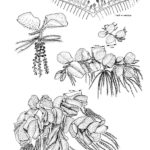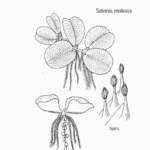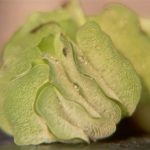Salvinia molesta
Non-Native
USDA, NRCS. 2018. The PLANTS Database (http://plants.usda.gov, 28 March 2018). National Plant Data Team, Greensboro, NC 27401-4901 USA.
Illustration courtesy of University of Florida/IFAS Center for Aquatic and Invasive Plants. Used with permission.
What is Giant Salvinia?
Physical Characteristics
Leaves:
- 2 small, simple lobes
- Whorls opposite of each other
Stem:
- Essentially stemless with some leaves as roots
Fruiting Body:
- Soft, thin walls
- 2 or more on a common stalk at the base of leaves
Roots:
- Branched horizontal root bearing simple roots
Where Does it Grow?
EDDMapS. 2024. Early Detection & Distribution Mapping System. The University of Georgia – Center for Invasive Species and Ecosystem Health. Available online at http://www.eddmaps.org/; last accessed January 17, 2024.
Non-Native
Giant salvinia is native to South America. Underwater, the leaves are modified into small root-like structures. Giant salvinia has sporangia, but are thought to reproduce only by fragmentation. Giant salvinia can double in size in 4 to 10 days under good conditions.
Is it Invasive?
Giant salvinia is non-native to the United States. Giant salvinia is an aggressive invader species. If colonies of giant salvinia cover the surface of the water, then oxygen depletion and fish kills can occur. These plants should be controlled. Giant salvinia is a significant problem in Texas and throughout the Southern U.S.
This is a non-native plant that should not be grown as it is invasive and illegal to possess or transport this species in Texas. Please report sightings to the Texas Parks and Wildlife Department at (512) 389-4800.








